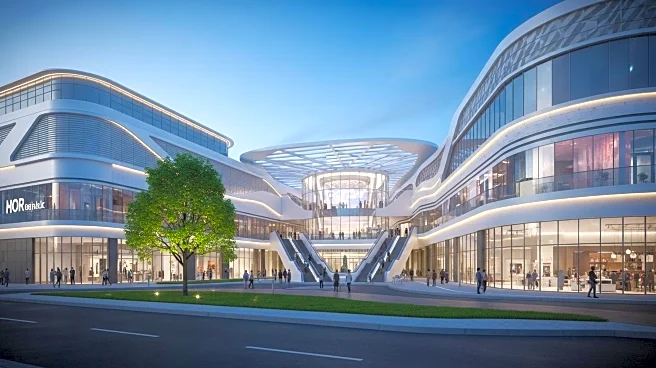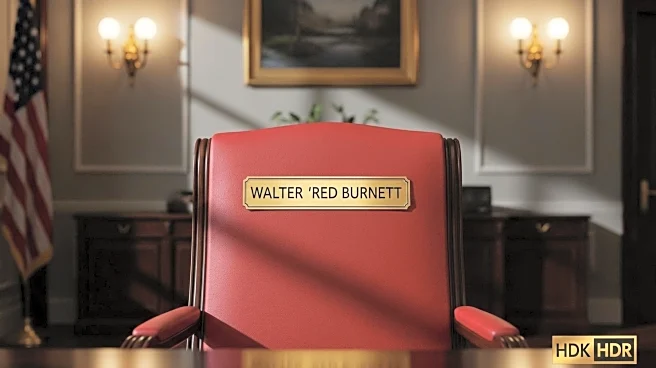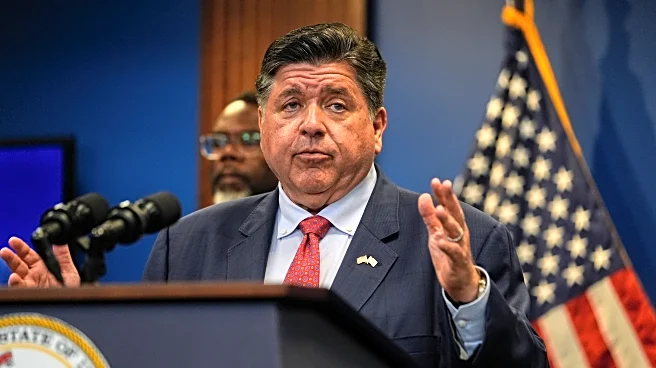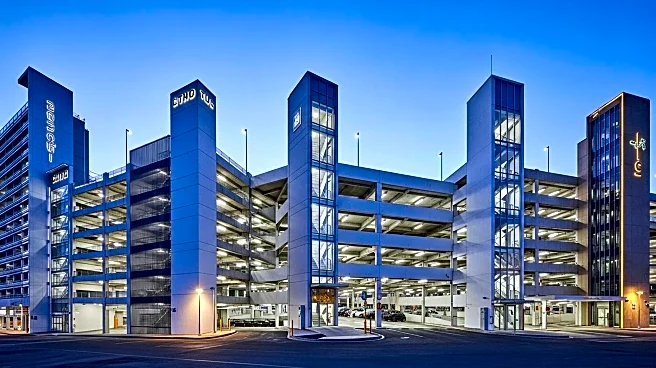What's Happening?
The Missing Middle Infill Housing Initiative in Chicago, originally launched under former Mayor Lori Lightfoot, aims to address urban disinvestment by developing vacant city-owned lots. The initiative, now continued by Mayor Brandon Johnson, has faced criticism for its lack of architectural ambition. The program seeks to fill approximately 8,800 vacant lots with modestly scaled structures like six-flats, two- and three-flats, rowhouses, and single-family homes. Despite the initiative's goal to revitalize neighborhoods on the South and West sides, the designs selected so far have been described as uninspired. The city has partnered with several development teams to construct multiunit buildings, but only one proposal has been noted for its aesthetic promise. The initiative also aims to provide affordable home ownership and rental opportunities, with land sold to developers for a dollar and grants provided for completed units.
Why It's Important?
The Missing Middle initiative is significant as it addresses the long-standing issue of urban disinvestment in Chicago, which has led to a decline in population and economic opportunities. By developing vacant lots, the city hopes to revitalize neighborhoods and stimulate economic growth. However, the criticism of the initiative's design choices highlights a missed opportunity to enhance the city's architectural landscape. The success of this initiative could set a precedent for other cities facing similar challenges, making it crucial for Chicago to balance affordability with quality design. The initiative's outcome could impact local communities by either improving or maintaining the status quo of neighborhood aesthetics and livability.
What's Next?
The initiative is set to continue with the construction of additional multiunit buildings in various neighborhoods. However, there is a call for the city to reconsider its design choices and leverage its investment to foster better architectural outcomes. The involvement of minority-led development teams is a positive step, but the city may need to engage more with the architectural community to ensure the designs meet higher standards. The initiative's progress will be closely watched by stakeholders, including residents, developers, and urban planners, who may push for changes if the current approach does not yield the desired results.
Beyond the Headlines
The initiative raises questions about the role of design in urban development and the responsibility of cities to invest in high-quality architecture. The current approach may reflect broader challenges in balancing cost, speed, and quality in public housing projects. The initiative's success or failure could influence future urban planning policies and the perception of public investment in housing. Additionally, the focus on minority-led development teams highlights the importance of diversity and inclusion in urban development, which could have long-term cultural and social implications for the city.












